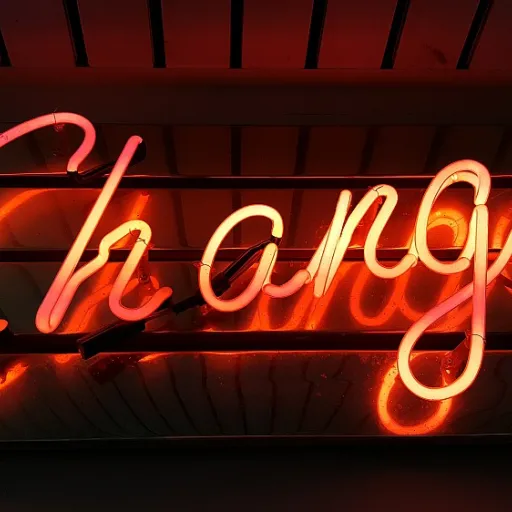
Defining non DOT drug screening
What Sets Non DOT Drug Screening Apart
Non DOT drug screening refers to drug and alcohol testing that is not governed by the Department of Transportation (DOT) regulations. Unlike DOT testing, which is federally regulated and applies to safety sensitive positions in transportation industries, non DOT testing is used by a wide range of employers outside of those federal requirements. This type of screening is often part of a company’s effort to maintain a drug free workplace and ensure workplace safety, but it is not bound by the same strict federal guidelines as DOT drug and alcohol testing programs.
Employers use non DOT drug screening for various reasons, including pre employment checks, random testing, or as part of a broader workplace drug and alcohol policy. The testing program can be tailored to the specific needs of the organization, allowing flexibility in the substances tested and the methods used, such as urine or saliva tests. This flexibility helps employers address substance abuse concerns and support a safe, compliant work environment.
- Regulated vs. Non-Regulated: DOT drug tests are required for employees in federally regulated transportation roles, while non DOT tests are used by employers in non-regulated industries.
- Testing Services: Non DOT drug screening can include a variety of substances and testing methods, depending on the employer’s policy and the nature of the workplace.
- Program Customization: Employers have more control over their non DOT drug and alcohol testing program, including which substances to test for and how often to conduct tests.
Understanding the differences between DOT and non DOT drug testing is essential for employers and employees alike. Non DOT drug screening plays a key role in supporting workplace safety and compliance, especially in industries not covered by federal transportation regulations. For organizations looking to build trust and transparency in their background check process, leveraging third-party background check solutions can further enhance the effectiveness of their screening program.
Key differences between DOT and non DOT drug screenings
Regulated vs. Non-Regulated Drug Testing Programs
When comparing DOT and non DOT drug screenings, the most important distinction is regulation. DOT drug testing is federally regulated and applies to employees in safety sensitive positions, especially in transportation sectors like trucking, aviation, and railroads. These tests are required by federal law to ensure workplace safety and compliance with strict regulations. Non DOT drug screening, on the other hand, is not mandated by federal regulations. Instead, it is designed by individual employers who want to maintain a drug free workplace but are not bound by DOT rules.
Testing Methods and Substances
DOT drug tests must follow specific procedures, including using urine samples and testing for a set panel of substances such as marijuana, cocaine, amphetamines, opioids, and phencyclidine (PCP). Alcohol testing is also a requirement in DOT programs. Non DOT drug screening offers more flexibility. Employers can choose from different testing services, such as urine, saliva, or even hair tests, and can expand the list of substances to include prescription drugs, synthetic opioids, or other substances relevant to their workplace.
Purpose and Application in the Workplace
DOT testing is focused on public safety and is required for employees in roles where substance abuse could have serious consequences, such as drivers or operators of heavy machinery. Non DOT drug screening is used by employers across various industries to support a drug free workplace, reduce substance abuse, and promote workplace safety, even if their employees are not in federally regulated positions.
Compliance and Legal Considerations
DOT drug and alcohol testing programs must comply with federal regulations, including detailed documentation and reporting. Non DOT programs are shaped by state laws and company policies, giving employers more control but also requiring them to stay updated on local legal requirements. For a deeper understanding of how legal frameworks can impact workplace decisions, you might find this article on the financial implications of granting power of attorney useful.
- DOT drug testing: Federally regulated, specific substances, urine and alcohol tests, safety sensitive positions
- Non DOT drug screening: Employer-driven, flexible substances and testing methods, applies to a broader range of employees
Common substances tested in non DOT screenings
What Substances Are Typically Detected?
Non DOT drug screening is designed to help employers maintain a drug free and safe workplace, but the substances tested can vary compared to federally regulated DOT drug tests. While DOT testing follows strict federal regulations and focuses on specific substances for transportation and safety sensitive positions, non DOT drug screening offers more flexibility for employers to tailor their testing program to their unique needs.
- Marijuana (THC): Still one of the most common substances checked, especially as state laws evolve. Employers may include or exclude marijuana based on company policy and local regulations.
- Cocaine: Frequently included due to its impact on workplace safety and performance.
- Opiates: This category covers drugs like morphine, codeine, and sometimes synthetic opioids. The scope can be broader than DOT tests.
- Amphetamines and Methamphetamines: These are often tested due to their potential for abuse and safety risks.
- Phencyclidine (PCP): Less common, but still included in many standard panels.
- Expanded Panels: Non DOT drug screening can include additional substances such as benzodiazepines, barbiturates, methadone, propoxyphene, and synthetic drugs, depending on the employer's policy.
- Alcohol: While not always part of routine non DOT drug tests, alcohol testing may be included, especially for safety sensitive roles or after incidents.
Employers can choose from various drug test panels, such as 5-panel, 10-panel, or even custom panels, allowing them to address specific workplace drug concerns. Testing methods also vary, with urine and saliva being the most common for non DOT drug screening. These methods offer a balance between detection window, convenience, and compliance with company policy.
Unlike DOT drug testing, which is strictly regulated and standardized for federal compliance, non DOT drug screening gives employers more control over their testing services and program design. This flexibility helps address unique risks and supports workplace safety goals. For a deeper dive into how different legal frameworks impact screening choices, check out this guide on legal differences in screening.
Why employers choose non DOT drug screening
Why companies opt for flexible drug screening solutions
Employers across various industries are increasingly choosing non DOT drug screening for several practical reasons. While DOT drug and alcohol testing is required for safety sensitive positions regulated by federal transportation authorities, many workplaces fall outside these strict regulations. Here’s why non DOT drug testing programs are gaining traction:- Broader applicability: Non DOT drug screening can be tailored to suit the unique needs of different workplaces, not just those in transportation or other federally regulated sectors. This flexibility allows employers to create a drug free environment across a wider range of roles, including office staff, warehouse workers, and retail employees.
- Customizable testing panels: Unlike DOT tests, which follow federal guidelines and focus on a specific set of substances, non DOT drug tests can include a broader or more targeted list of substances. Employers can choose to test for prescription drugs, synthetic substances, or alcohol, depending on their workplace safety goals.
- Support for workplace safety and productivity: Substance abuse can impact safety, morale, and productivity. Non DOT drug screening helps employers identify potential risks and maintain a safer, more productive workplace, even when not required by federal regulations.
- Pre employment and random testing: Many employers use non DOT drug screening as part of their pre employment process or ongoing testing program. This helps ensure that new hires and current employees meet the company’s standards for a drug free workplace.
- Compliance with company policies: While not federally mandated, many organizations have internal policies requiring drug and alcohol testing. Non DOT drug screening supports these policies and demonstrates a commitment to workplace safety and well-being.
- Variety of testing methods: Non DOT drug screening allows for different types of tests, such as urine, saliva, or even hair, giving employers more options to fit their needs and budget.
How non DOT drug screening fits into background checks
Integrating Non DOT Drug Screening into Hiring and Workplace Policies
Non DOT drug screening plays a significant role in the broader context of background checks, especially for employers who are not strictly regulated by federal transportation or safety-sensitive regulations. While DOT drug testing is mandatory for certain positions—such as those in transportation or roles deemed safety sensitive—non DOT drug screening gives employers flexibility to design a drug free workplace program that aligns with their unique needs and compliance requirements. Employers often include non DOT drug and alcohol testing as part of their pre employment screening process. This helps ensure that new hires meet workplace safety standards and reduces the risk of substance abuse issues among employees. Unlike regulated drug tests under federal DOT regulations, non DOT tests can be tailored to the specific substances or testing methods (like urine or saliva) that best fit the company's policies and local laws. Key ways non DOT drug screening fits into background checks:- Customizable Testing Panels: Employers can select which substances to include in the drug screen, going beyond the standard DOT panel to address workplace-specific risks.
- Flexible Testing Methods: Options such as urine, saliva, or even hair testing services allow for a broader approach to detecting substance use.
- Ongoing Compliance: Non DOT drug and alcohol testing supports ongoing workplace safety and compliance with state or company regulations, even for roles not covered by federal DOT rules.
- Support for a Drug Free Workplace: Regular non DOT drug tests can be part of a comprehensive program to maintain a safe and productive environment for all employees.
Trends and challenges in non DOT drug screening
Shifting Patterns in Drug and Alcohol Testing
Non DOT drug screening is evolving quickly as employers adapt to new workplace realities and changing regulations. Unlike DOT testing, which follows strict federal guidelines for safety sensitive roles in transportation and other regulated industries, non DOT programs offer more flexibility. This flexibility allows employers to tailor their drug and alcohol testing policies to fit specific workplace needs, but it also introduces unique challenges.
Emerging Trends in Non DOT Drug Screening
- Expanded Substance Panels: Many employers are broadening the list of substances tested beyond traditional drugs like marijuana, cocaine, and opiates. There is growing interest in screening for prescription medications, synthetic drugs, and even alcohol, reflecting concerns about substance abuse and workplace safety.
- Alternative Testing Methods: While urine tests remain common, there is a noticeable shift toward saliva and hair testing. These methods can detect recent drug use and offer faster turnaround times, which is valuable for pre employment and random drug screen programs.
- Increased Frequency of Testing: Some employers are increasing the frequency of drug and alcohol tests, especially in industries where safety is a top priority. Random and post-incident testing are becoming more routine to maintain a drug free workplace.
- Focus on Compliance: Even though non DOT drug screening is not federally regulated, employers are under pressure to ensure their testing program aligns with state laws and industry best practices. This is particularly important as marijuana laws change and new substances emerge.
Challenges Facing Employers and Employees
- Legal Complexities: The patchwork of state regulations around drug testing and marijuana use creates compliance challenges. Employers must stay updated on evolving laws to avoid legal risks and ensure fair treatment of employees.
- Balancing Privacy and Safety: Employers need to respect employee privacy while maintaining workplace safety. This balance is especially delicate when implementing drug and alcohol testing services outside of federally regulated programs.
- Program Effectiveness: Ensuring that a non DOT testing program actually deters substance abuse and supports a drug free workplace requires ongoing review and adjustment. Employers often seek expert guidance to refine their policies and testing methods.
Looking Ahead: The Future of Non DOT Drug Screening
As workplace drug and alcohol testing continues to adapt, the emphasis remains on creating safe, compliant, and productive environments. Employers are investing in education, updated testing technologies, and clear communication to support their drug screening efforts. The landscape will likely keep shifting as new substances, testing methods, and regulations emerge, making it crucial for employers to stay informed and proactive in their approach to workplace safety and compliance.












